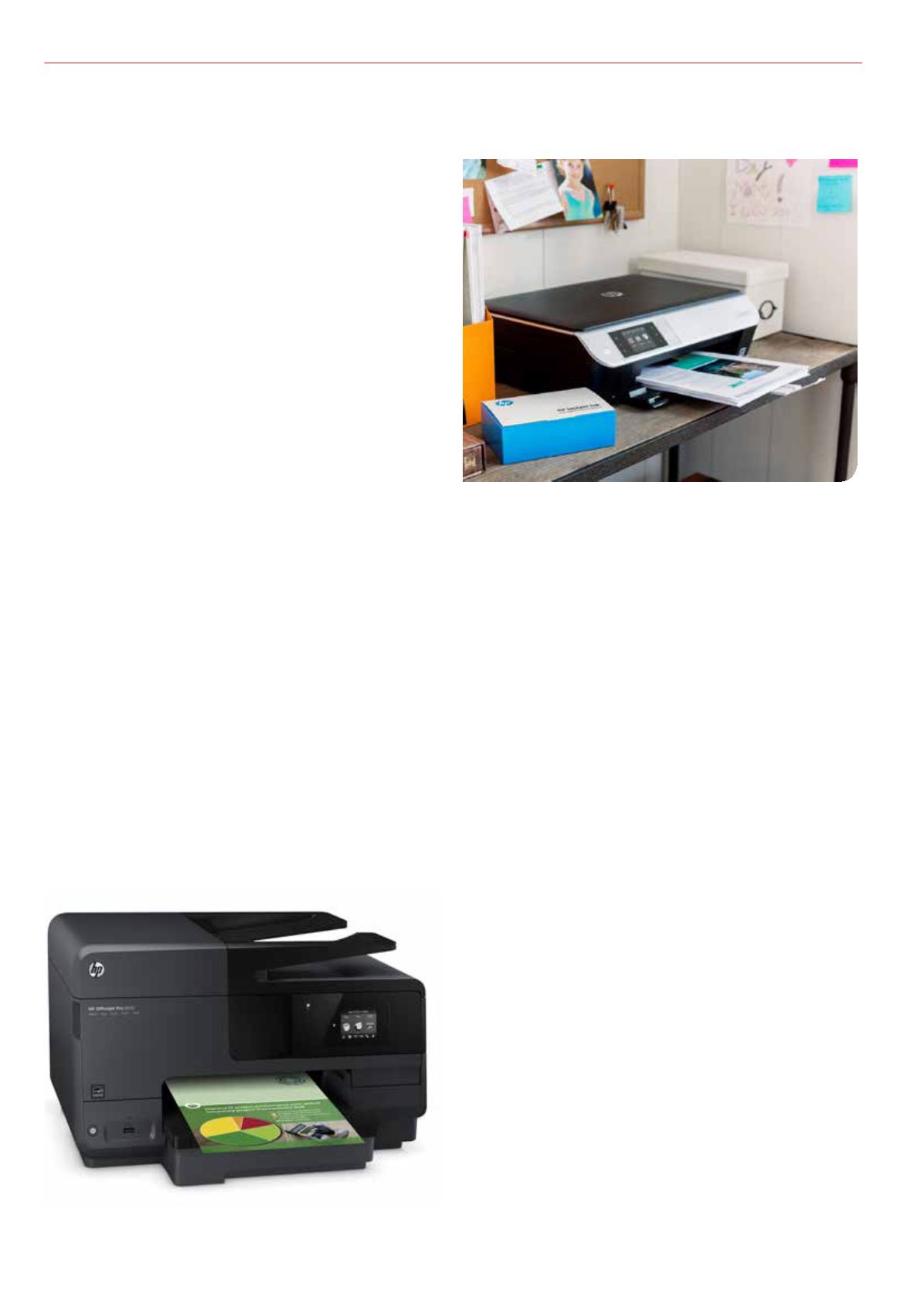
PRINT.IT
23
Continued...
Instant Ink: changing the way people buy print
opening or loan applications
in a bank are paper-intensive.
The information they need – a
copy of a photograph, passport,
home bill etc. – is just the tip
of the iceberg. The level of
information they get you to fill
out and then process and how
they move that paper through
their organisation is wholly
inefficient. That is something
financial services is grappling
with: how do they streamline
all those processes? Does it
mean less pages are printed?
Absolutely. No doubt. But we
think we can make it very
simple on our devices – and
not just at our device: it’s
innovating around the device,
through the eco-system back
into the central system.”
This, says Tierney, could
involve a retreat from
centralised printing to
distributed printing close to
users’ workstations.
“The typical environment
in an office today is very
much about consolidation
of print and convergence of
printers, copiers, fax machines
and scanners – going away
from personal printers on
people’s desks to more of a
departmental solution with
one big device that everyone
shares. Today, when you send
a print job to a 50-user group
departmental device, you walk
up to the device, most probably
authenticate yourself using a
pull print solution, collect your
print-out and go. It’s relatively
fast. If you are scanning, the
amount of time you spend at
the device is a lot longer. If
scanning is going to become a
bigger part of what people do, it
raises the question of whether
a departmental device can
handle the volume, because
the last thing you want is a
queue of people all waiting to
use the scanning function. If
this becomes a function more
people need, and we believe
it will, then it’s questionable
whether a departmental device
can support a multitude of
users all wanting to scan. This
is why we have been innovating
the scanner function, bringing
enterprise scanning into an
MFP platform that can operate
at a workgroup level of 10-15
people rather than the typical
30-50 departmental level.”
Flow MFPs
A good example of this
approach is HP’s Flow MFPs,
which are optimised for digital
workflows, with higher speed
dual-head scanners, featuring
HP everypage technology to
eliminate misfeeds and large
touchscreen displays for easy
data input and scan routing.
Routing options include
the HP Flow CM Professional
content management system
based on software from
Autonomy. Integration with
HP Flow CM Professional,
which can be installed on-site
or accessed via the cloud (in
the US only, so far), enables
users to capture, index, store,
search for, retrieve and print
documents at the MFP control
panel, as well as through any
standard web browser.
“We see scanning as a
big growth opportunity and
a pull-through business. Our
focus is on simplifying it: first
by industrialising the scanning
piece so that it is not an ‘oh, by
the way, the device also scans’
feature, but an essential part
of the product; and secondly
by simplifying how it integrates,
making the user interface very
intuitive and standardising
it across the range both for
laser and ink devices,” Tierney
explained.
As an illustration of how
scan-enabled MFPs can
improve everyday business
processes even where
employees don’t have access
to PCs, such as in retail,
Tierney cites the example of
holiday forms.
“You fill in a form, your
manager signs it and it goes off
to HR and is filed somewhere.
It’s a very simple process. If
you were to design a printable
holiday form with a barcode
on it, everyone could print
one off at a device, add their
details, sign it, hand it to the
manager to get signed and
then put it back on the device
and hit scan. The barcode will
direct it straight to where it’s
supposed to go. You can make
it all happen very quickly, very
simply. You can design complex
processes and deploy them to
every device from one central
system. The look and feel is
exactly the same whether you
are at a device in Reading or
Edinburgh or Liverpool. That
enterprise-type piece is going
to be hugely important.”
Instant Ink
Another HP innovation that,
like Flow CM Professional,
makes use of the cloud
is HP’s newly launched
Instant Ink subscription
service, which automatically
provides consumables for
web-connected HP Envy
and Officejet Pro printers.
Subscribers pay a small
monthly charge (from just
£1.99 per month) for a fixed
number of pages (colour or
mono) and are sent as many
replacement cartridges as they
need on a just-in-time basis as
part of their subscription.
“This addresses specific
customer feedback we have
had for years now about
1) the cost of printing and
2) convenience. How do
people keep track of which
ink cartridge is right for their
device? Typically, the only time
anyone finds out they need a
new one is when ink falls to
very low levels, often when
HP Officejet Pro 8610:
driving down the cost of print in small businesses


